Characterisation Methods
X-Ray Photoelectron spectroscopy (XPS, formerly known as ESCA)
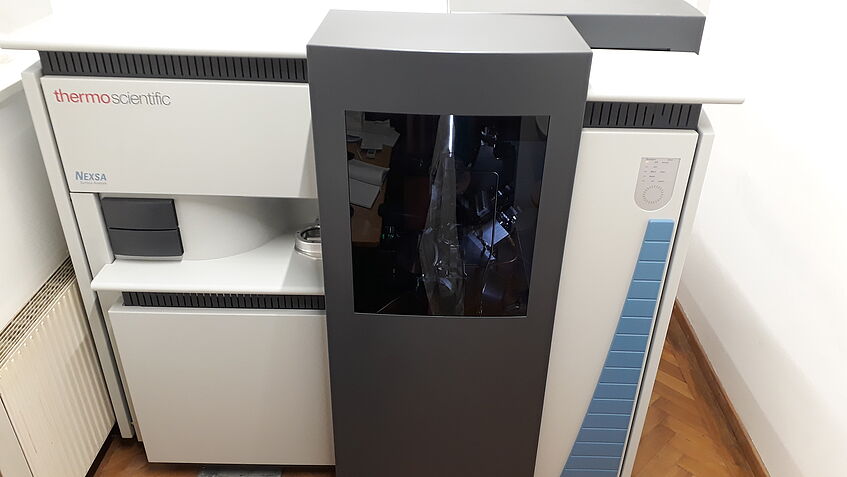
X-Ray Photoelectron spectroscopy (XPS, formerly known as ESCA)
The elemental composition of surfaces is analysed by XPS (ThermoScientific Nexsa) with Al Kα radiation. The instrument is equipped with an Ar cluster ion gun allowing for low energy (e.g. polymer) or high energy (e.g. metals) etching of surface to clean the surface and allow for analyzing depth profiles.
Inverse Gas Chromatograph (iGC)
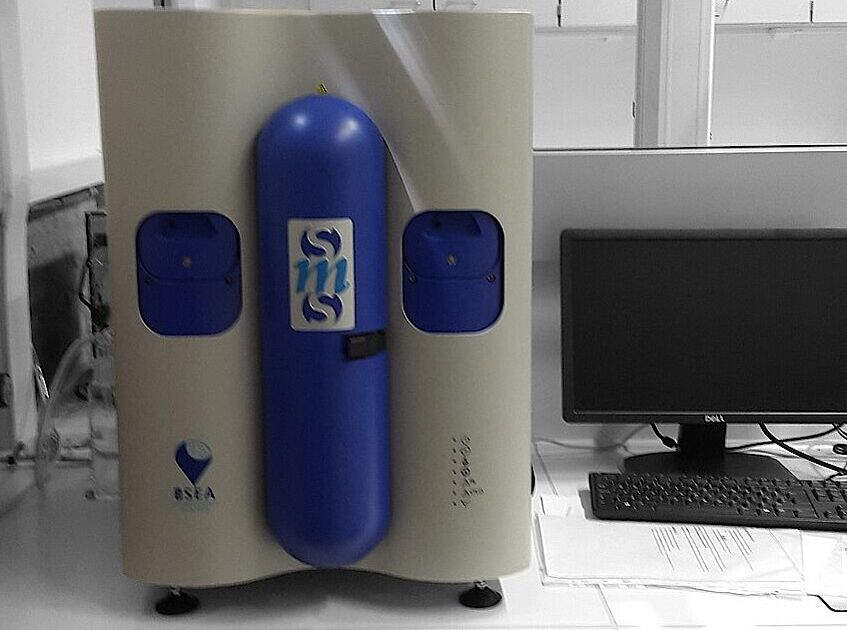
Inverse Gas Chromatograph (iGC)
iGC (SMS Surface Measurement Systems) is an advanced gas phase instrumentation for the characterisation of particulates, fibres and thin-films. Opposed to conventional GC, the sample acts as column and known amounts of various gases are injected and from the chromatograms e.g. surface energies and its components as well as specific surface areas, acid/base/polar functionality of surfaces, diffusion kinetics, solubility parameters, etc. calculated.
Foam analyser
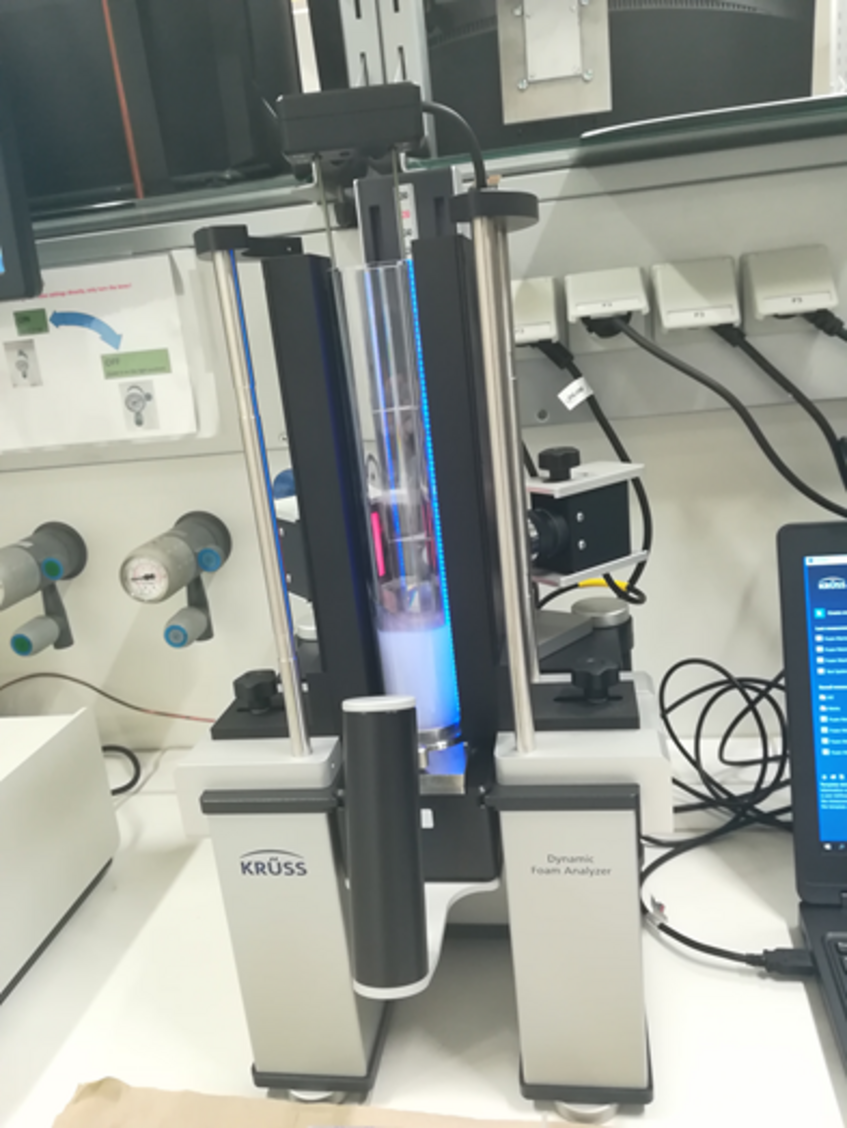
Foam analyser
The Dynamic Foam Analyser (Krüss) is used to study foamability and foam stability of liquid foams. Furthermore, bubble size and bubble size distribution can be measured as function of time.
Dynamic Contact Angle measurement
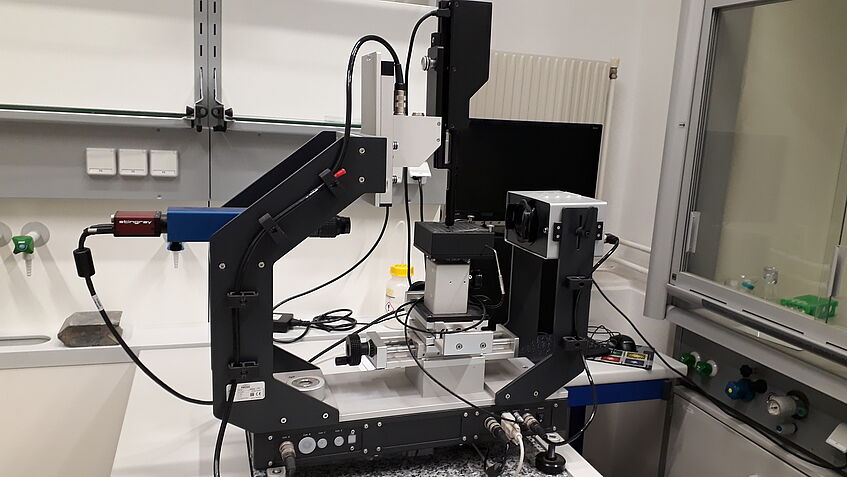
Dynamic Contact Angle measurement
The contact angle is the angle at which a liquid/vapor interface meets the solid surface, specific for any given system and is determined by the interactions across the three interfaces. Using a Drop Shape Analyzer (DSA30 K, Krüss) surfaces can be probed with a variety of test liquids to obtain advancing and receding contact angles and subsequently calculate surface energies. Hot melts and their interaction with surfaces (such as powder beds) can also be studied up to temperatures of 400°C.
Contact angle of polymer melts
Polymers can be extruded/injected into an environmental, temperature controlled measurement chamber of a Krüss DSA 10. The chamber can also be used to assess contact angles between a polymer melt and a substrate (in an inert/chosen gas atmosphere). Imbibition measurements of polymer melts into powder compacts of the reinforcement phase can be made to allow assessment of the interface between the phases.
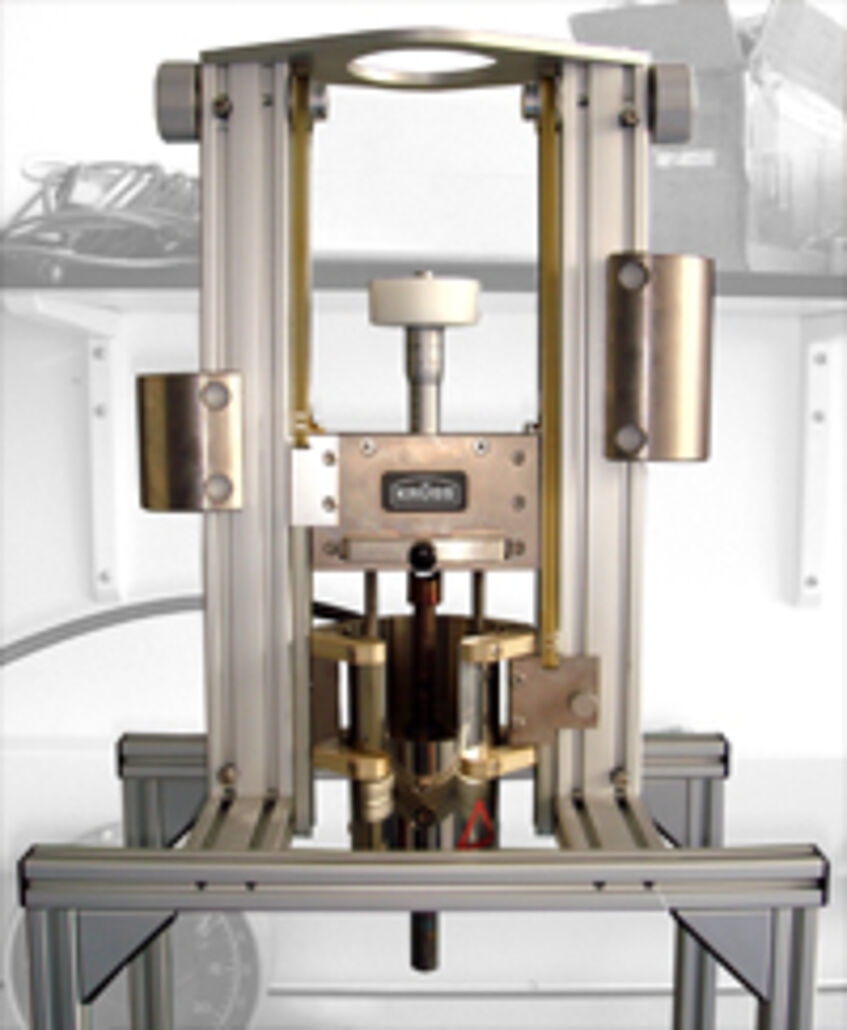
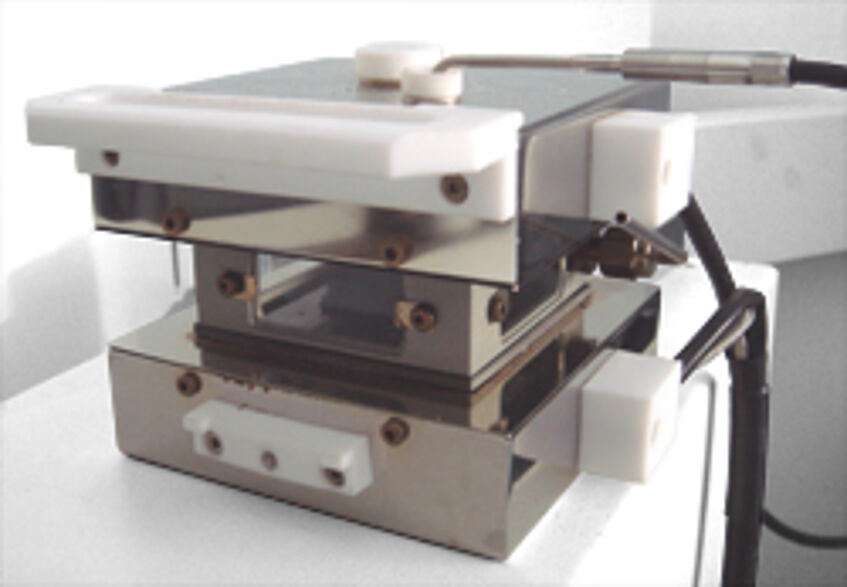
High pressure and temperature contact angle rig
Surface and interfacial tensions (i.e. contact angles, captive bubbles/drops, interfacial tensions) at elevated temperatures and pressures are required in the development of materials or the understanding of phenomena relevant to the oil and gas industry. The surface / interfacial tension and wettability of a substrate in contact with one or two equilibrium liquid phases can be measured in a thermostated high-pressure view cell in aggressive environments at pressures of up to 700 bar at temperatures up to 200°C.
Zeta Potential (streaming and electrophoresis) measurement
The zeta-potential of porous media, fibres, films, and powders can be studied using various measuring cells by the streaming potential method (Elekrokinetic Analyser SurPass, Anton Paar) as a function of time, pH and type and concentration of the electrolyte. The zeta-potential plateau region and the isoelectric point (point of zero charge) can be determined by pH dependent measurements to assess surface modification by (for example) plasma treatment or compound adsorption.
By electrophoresis (Malvern Zetasizer) the surface charge, electrokinetic mobility and size of particles in suspension can be assessed based on the principle of light scattering.
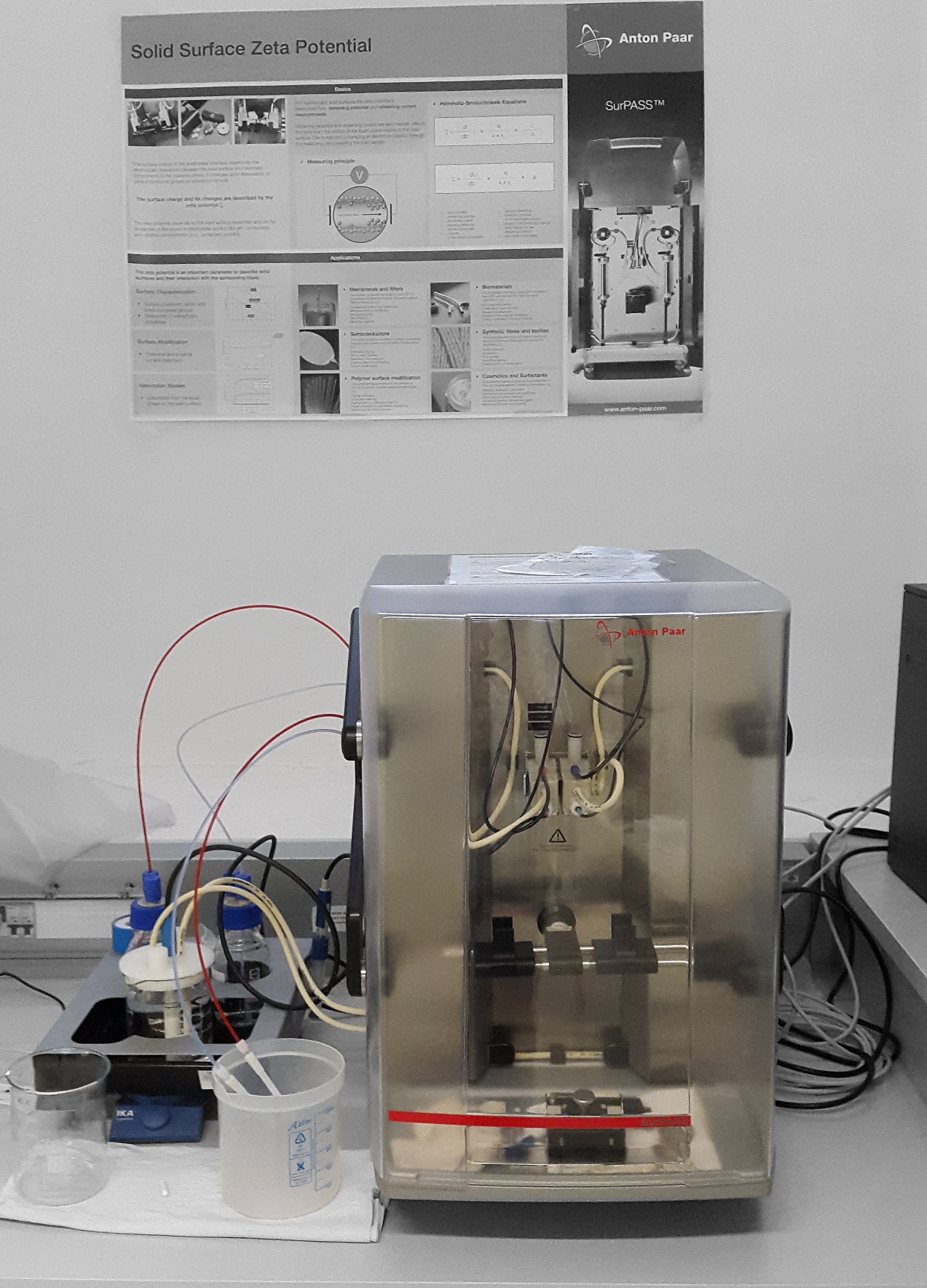
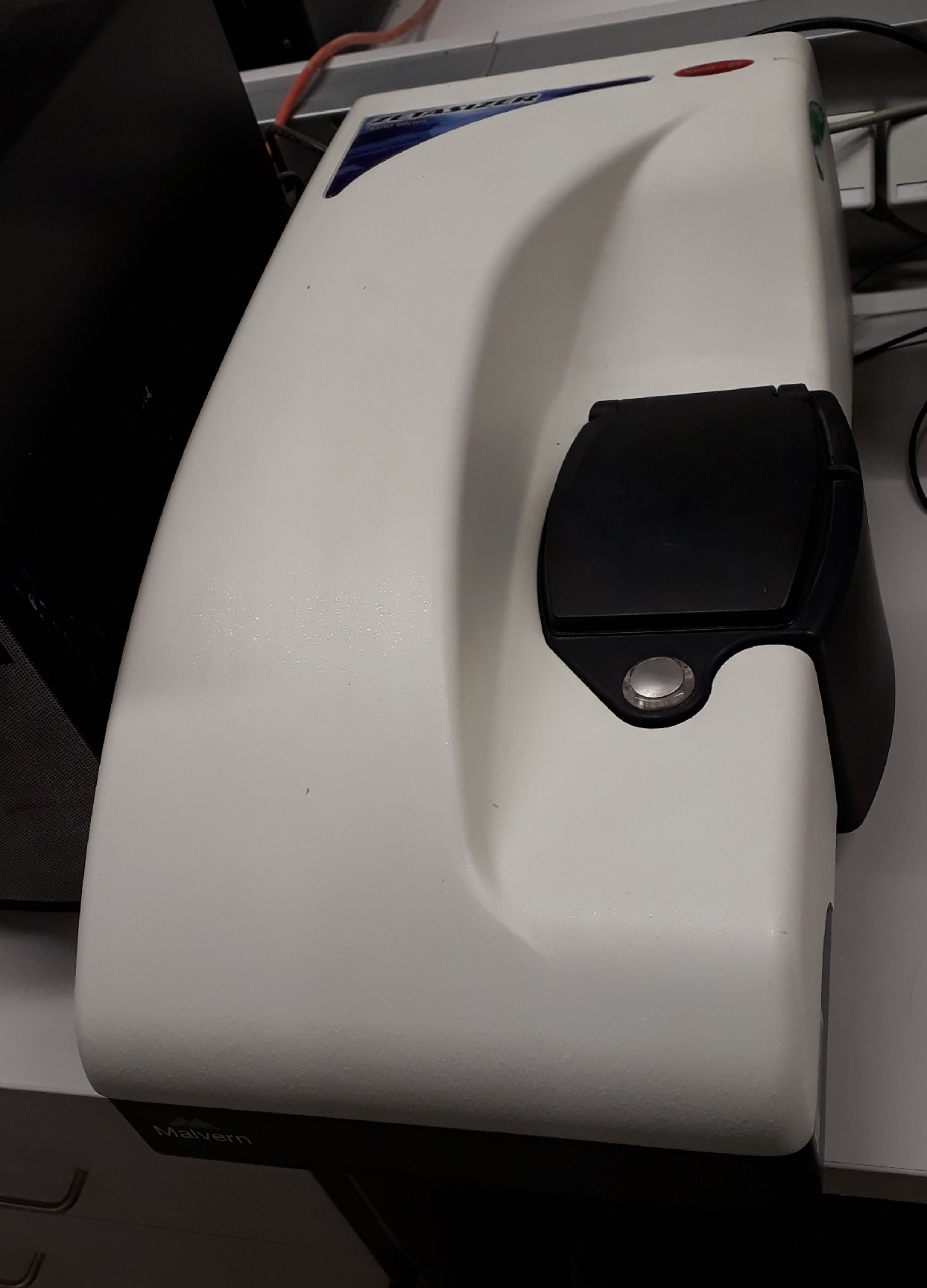
Tensiometry and single fibre wettability measurement
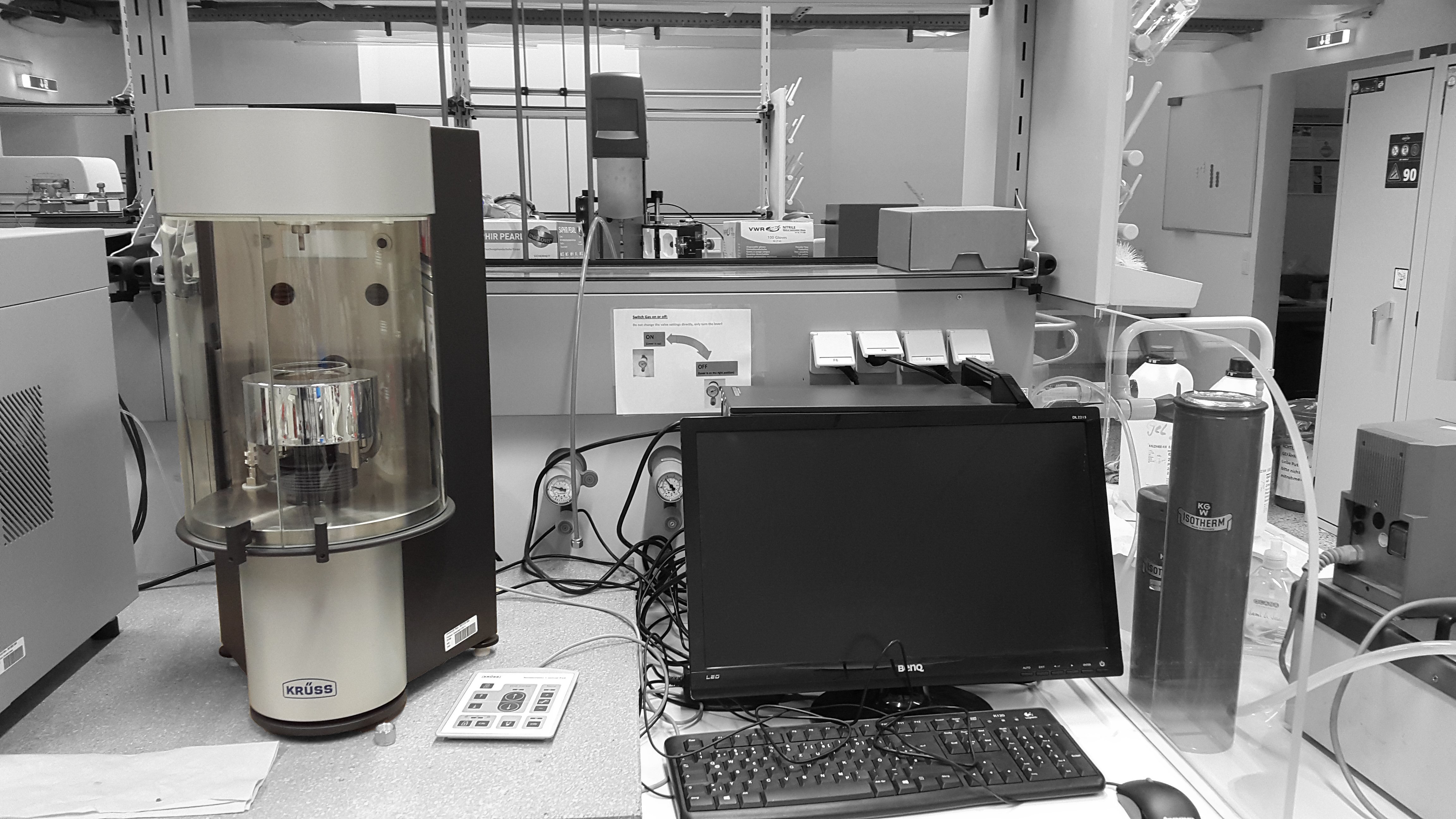
Tensiometry and single fibre wettability measurement
The dynamic fluid sorption (capillary rise) technique is used to determine the wettability of porous systems, fibres, powders and membranes using an automated Tensiometer (Krüss K100). By applying the modified Washburn equation surface energies can be calculated. Determination of surface/interfacial tensions using the Ring- or Wilhelmy-plate methods is also possible.
A modified Ultramicrobalance (4504 MP8, Sartorius, Göttingen, Germany; accuracy = 0.1 μg) is used to measure contact angles on single (carbon) fibres with diameters as low as 5 μm by applying the modified Wilhelmy-technique.
Microscopic analysis
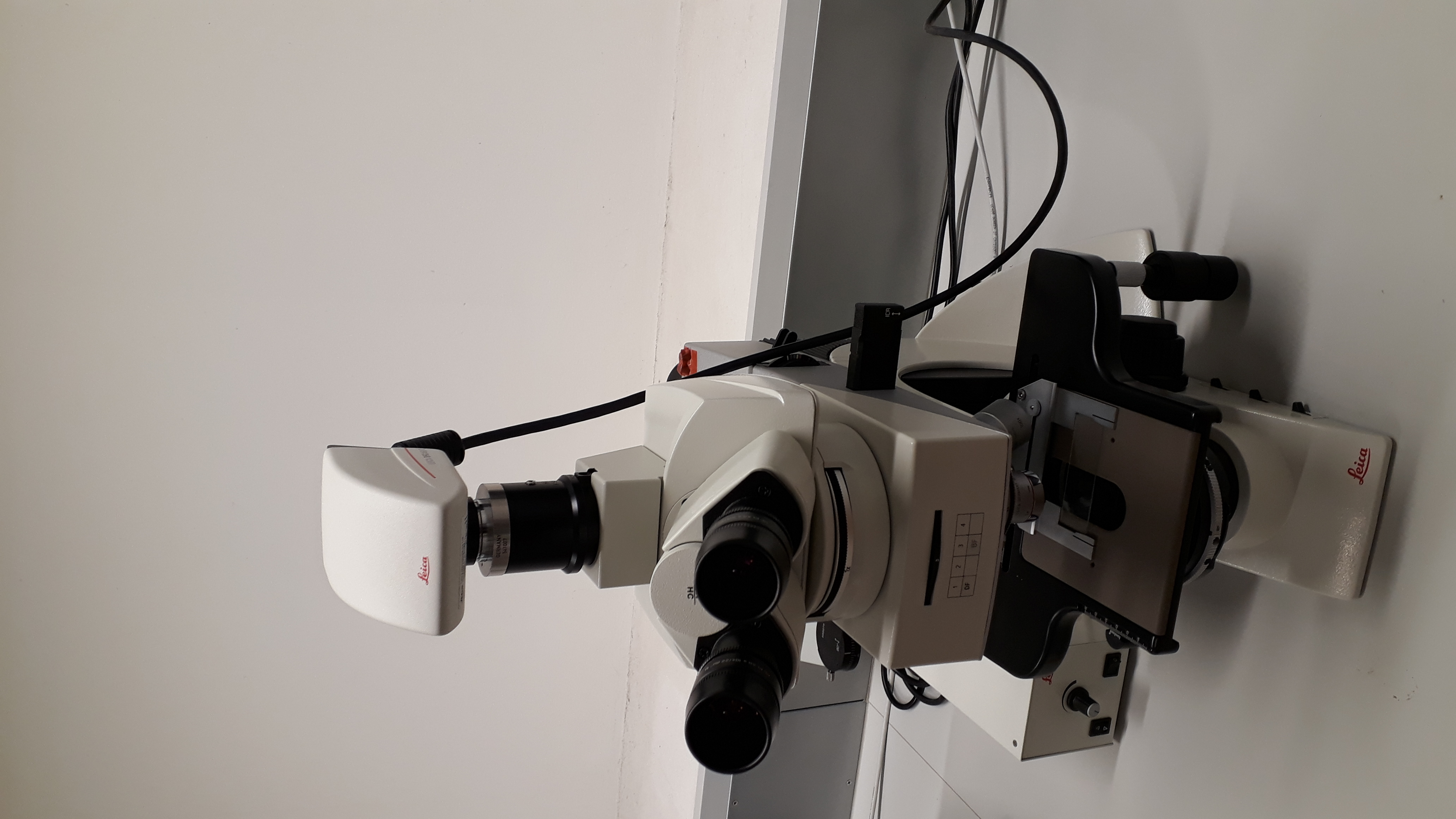
Microscopic analysis
We have a wide array of optical microscopes (e.g. Leica DM 2700), are interfaced with digital cameras and image analysis software for measuring e.g. pore sizes. Linkham hot plate and cold stage accessories are used for studying the development of crystallinity of polymers over time, this is also used to identify the site of nucleation (i.e. from the surface of carbon fibres).
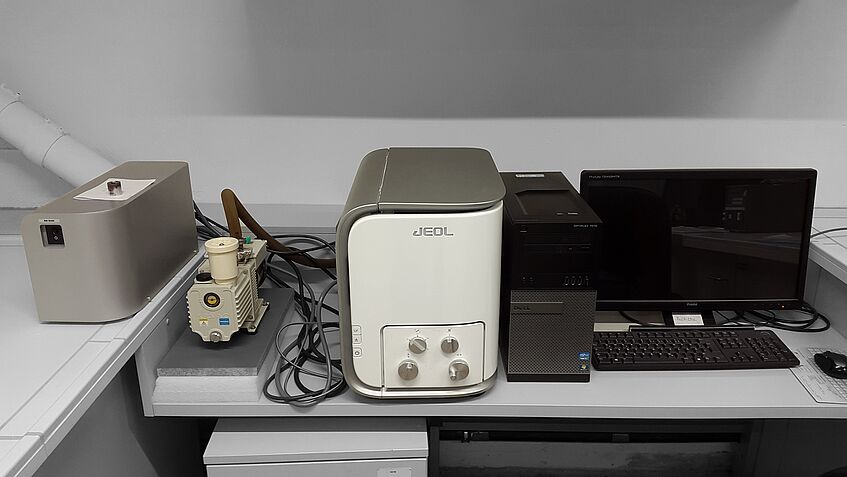
We also have a table top SEM (JEOL NeoScope JCM-6000) and access to high-res Scanning Electron and Transmission Elcetron Microscopy at the Faculty Center for Nano Structure Research.
BET Surface Analysis
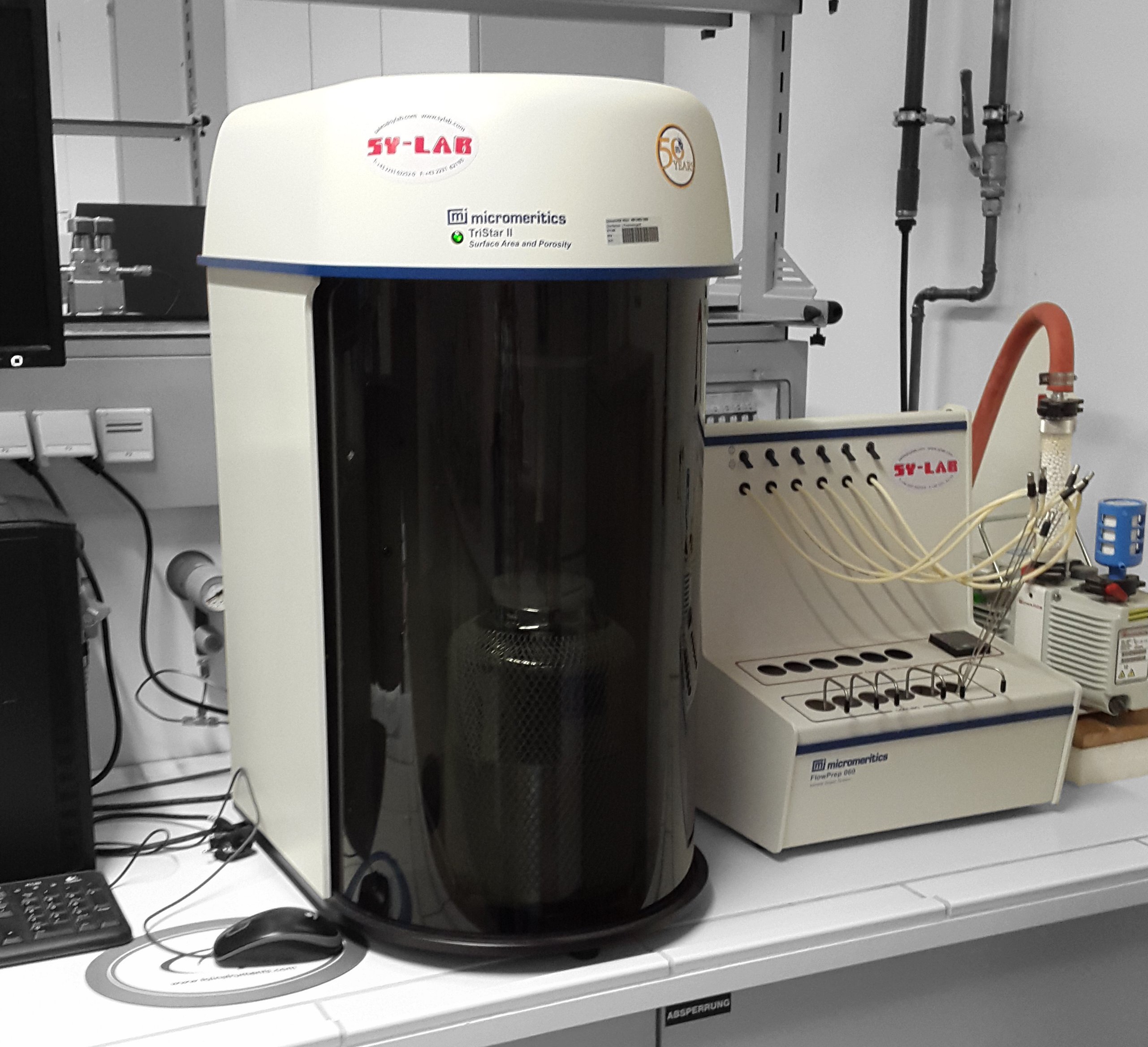
BET Surface Analysis
A Surface Area Analyser (Micromeritics TriStar II) is used to determine specific surface areas utilizing the BET isotherm method by nitrogen adsorption/desorption.
